During the 1920s and 1930s, composers and lyricists fused earlier song structures to produce a verse-refrain form which, in the hands of more inventive composers, allowed for all sorts of interesting variations. How does a song’s form affect its style or musical interpretation?
What is a Song Form
Simply . . . Song Form arranges the structure of songs into an easy to understand framework. Song structure is important because it organizes how songs are written while aiding in how they are recognized and appreciated. Without a song having shape, songs are can become chaotic and unlistenable.
Why is this important? Simply, song form, allows the story to be told so that people listening can better understand and enjoy the experience of the song.
You don’t have to reinvent the wheel in order to be creative, however. That’s where song form comes into play. Think of the most common types of song structures as universally agreed upon roadmaps for songs.
Song Form reveals to us where the song is going.
Consider that song form helps song writers keep an overview of songs and how sections of music that make up the song will be organized.Imagine song form as a map made up of locations that we know of as verses, choruses and bridge.
What are the parts we are generally concerned with then;
- Verses are similar but differ slightly from each other
- Chorus often differs from verse
- Bridges can be very different
When discussing song forms, a system of letters are assigned to the different sections of a song. Repeated sections get assigned the same letter as was assigned on the first occurrence of that section. The letters then create a map of the overall song.
The assignment of letters is not what you would think, however. We don’t use the first letters of “V” for Verse, “C" for Chorus or “B” for Break, but rather the first letters of the alphabet.
For example ;
A=Verse
B=Chorus
C=Bridge
Strophic / AAA / One-Part Song Form
Strophic . . . What was that? Strophic describes how each verse is sung to the same tune.
Strophic Song Form is also called AAA Form or One-Part Song Form. AAA song form is one of the oldest sectional song forms. How far back does it go? Originally it was used in the adaption of poems, with composers setting the poems to music to perform them for the entertainment of the royal courts of Europe.
In Mary Had A Little Lamb has a melody which is repeated, in Strophic Song Form, and each time the melody repeats different words are sung to the melody. This makes it an ideal song form for story telling.
The nursery rhyme was first published by the Boston publishing firm Marsh, Capen & Lyon, as a poem by Sarah Josepha Hale on May 24, 1830, and was possibly inspired by an actual incident
- “Mary Had a little lamb" by Stevie Ray Vaughn 1983, Traditional
- “Mary Had a little lamb" by Stevie Ray Vaughn 1983, Traditional
AAB Form - 12 Bar Blues
The 12-bar blues form used in the AAB song form is strongly associated with the blues. Many Blues songs are in the AAB format.
The fundamental structure of 12 Bar Blues is three four-bar lines or sub-sections. Often the first two and a half bars of each 4 bar section are vocal melody, while the last one and a half bars contains an instrumental melodic hook that gives a sense of completion for the line.
Unlike AAA or AABA song forms, which describe the overall structure of the song, AAB describes the structure of an individual verse. AAB is always used as a compound form.The common variants for 12-Bar blues are 8-Bar form and 16-Bar form.
Elmore James played a modified “Kay” hollow-body acoustic guitar, which sounded like an amped-up version of the more "modern" solid-body guitars of today.
- “Dust My Broom" by Elmore James 1959, originally by Robert Johnston 1936
- See this article on the evolution of heavy metal sound
AABA Song Form / American Popular Song Form
This is one of the most commonly used forms in both jazz and early to mid-twentieth-century popular music.
The AABA format was the song form of choice for Tin Pan Alley songwriters of American popular music, an East Coast USA songwriter scene based in New York City, in the first half of the 20th century.
Tin Pan Alley songwriters included songwriting greats like Irving Berlin, Harold Arlen, Sammy Cahn, Hoagy Carmichael, Dorothy Fields, Johnny Mercer, George and Ira Gershwin.
The dominance of the AABA song form faded during the 1960s. The rise in popularity of rock 'n' roll and the rise of groups like The Beatles changed the popular music landscape. Before The Beatles broke off into other song writing formats, they heavily used AABA song form in many songs.
It uses this song form in several music genres including pop, jazz and gospel.
- “Over the rainbow by “Judy Garland" 1938,
- Wizard of Oz movie
- Eight Days A Week by the “Beatles”
Housekeeping; Euphemisms: where an unpleasant or offensive thing is described or referred to by a milder term.
The promotional catchphrase “race music” was first applied by Ralph Peer (1892-1960), a Missouri-born talent scout for Okeh Records.
"Hillbilly" is a term (often derogatory) for people of various ethnicities who dwell in rural, mountainous areas in the United States, primarily in southern Appalachia and the Ozarks. The label, coined in 1925 by country pianist Al Hopkins, persisted until the 1950s.Although a clear distinction can be drawn between race music and hillbilly music — each of which comprised dozens of specific styles — the two had several important features in common.
- Both bodies of music originated mainly in the American South and
- rooted in longstanding folk music traditions.
As they entered the mass marketplace, both blended these older rural musical styles with aspects of national popular culture, including the minstrel show, vaudeville, and other musical forms.
Race music and hillbilly music both grew out of the music industry's efforts to develop alternative markets during a national decline in record sales.
Music was now disseminated across the country by new forms of media including;
- electric recording,
- radio, and
- sound film
and by the process of urban migration, which affected the lives of millions of rural Americans during the 20s and 30s.
Both bodies of music provided the basis for forms of popular music that emerged after World War II (rhythm & blues, country and western, and rock ”n” roll ), extending their appeal across regional and, in the end, international boundaries.
Jazz's attraction as a symbol of
- sensuality,
- freedom,
- and fun
does appear to have transcended the boundaries of
- region,
- ethnicity,
- and class,
Creating a precedent for music phenomenas such as
- swing era music,
- rhythm & blues,
- and rock ”n” roll.
“Hillbilly music,” later rechristened “country and western music” or simply “country music,” developed mainly out of the folk songs, ballads, and dance music of immigrants from the British Isles.
The first generation of hillbilly recording artists was also familiar with the sentimental songs of Tin Pan Alley, and this material became an important part of the country music repertoire, alongside the older Anglo-American ballads and square dance tunes.
Recordings of the late 1940s and early 1950s included swing-influenced “jump bands,” Tin Pan Alley-style love songs performed by crooners, various styles of urban blues, and gospel-influenced vocal harmony groups. The reappearance of small independent record labels provided an outlet for performers who were ignored by major record companies.
These jump bands specialized in hard-swinging, boogie-woogie based party music, spiced with humorous lyrics and wild stage performances.
Music from 1930s -1940s
- "Tiger Rag" by the Washboard Rhythm Kings 1932,
- was a virtually out-of-control performancer
- This is just one of many recordings by spasm bands, jug bands, and skiffle groups that have the same wild, informal feel that early rock-and-roll had.
- "Tiger Rag" had become a jazz standard and a widely covered song in the dance band and march orchestrations.
- "Oh! Red" by the Harlem Hamfats, recorded on April 18, 1936,
- was a hit record made by a small group of jazz and blues musicians assembled by J. Mayo Williams for the specific purpose of making commercially successful dance records.
- Viewed at the time (and by jazz fans) as a novelty group, the format became very influential, and the group's recordings included many with sex and drugs references
- "I Believe I'll Dust My Broom" (recorded on November 23, 1936),
- "Crossroad Blues" (recorded on November 27, 1936), and other recordings by Robert Johnson, while not particularly successful at the time, directly influenced the development of Chicago blues and, when reissued in the 1960s, also strongly influenced later rock musicians.
- "Rock It for Me" was recorded by Ella Fitzgerald with Chick Webb and His Orchestra in 1937.
- Its lyrics mentioned a kind of music called "rock-and-roll": "Every night/You'll see all the nifties/Plenty tight/Swingin' down the fifties/Now they're all through with symphony/Ho ho ho, rock it for me!/Now it's true that once upon a time/The opera was the thing/But today the rage is rhythm and rhyme/So won't you satisfy my soul/With the rock and roll?"
- "One O'Clock Jump" by Count Basie, arranged by Eddie Durham and recorded on July 7, 1937,
- based on a 12-bar blues that builds in rhythmic intensity and features, like many of Basie's other records, the rhythm section "all but invented the notion of the swing through their innovations"
- "Sing, Sing, Sing" by Benny Goodman, also from 1937,
- written by Louis Prima,
- featured repeated drum breaks by Gene Krupa, whose musical nature and high showmanship presaged rock and roll drumming.
- "Ida Red" by Bob Wills and the Texas Playboys, recorded in 1938
- Western swing band, featuring electric guitar by Eldon Shamblin.
- The tune was recycled again some years later by Chuck Berry in "Maybellene"
- "Rock Me" by the Lucky Millinder Orchestra with Sister Rosetta Tharpe vocals and guitar 1938,
- a gospel song done like a city blues
- the way she rolled the "R" in "rock me" led to the phrase being taken as a double entendre, with the interpretation as religious or sexual.
- "Roll 'Em Pete" by Pete Johnson and Joe Turner (1938)
- driving boogie woogie and a masterful collation of blues verses
- one of the most important precursors of what later became known as rock and roll
"Flying Home" by Lionel Hampton and his orchestra (1939),
- tenor sax solo by Illinois Jacquet,
- recreated and refined live by Arnett Cobb, the model for rock and roll solos ever since;
- emotional, honking,
- long, not just an instrumental break but the keystone of the song.
- The Benny Goodman Sextet had a popular hit with a subdued "jazz chamber music" version of the same song featuring guitarist Charlie Christian.
Since we can’t narrow our list of possible Rock & Roll candidates down to a two dozen or so, let’s see where it takes us.
Nick Tosches says it best | ”It is impossible to discern the first modern rock record, just as it is impossible to discern where blue becomes indigo in the spectrum."
So why so many think that Jackie Brenston made the first rock ‘n’ roll record? Well for a start, Sam Phillips was fond of telling people that it was.
Bringing you into the folds of the shows purpose, is to better understand where modern forms of popular music are evolving from and how their history has become entrenched in our modern music belief systems.
That’s not to say that we won’t dig through the bins and listen to some fabulous examples of bad music, or listen to the same song done by 20 different bands or look at why there are more than 500 songs that talk about chicken.
------------
Today we are calling bullshit on the origin of the first Rock & Roll song myth, or are we? Was it really just a fuzzy guitar sound hit upon by accident that made Rocket 88 the first Rock & Roll song? Or was it an evolution of events, people, styles, cultures and languages colliding. People have opinions, and there a more than a few regarding the first Rock & Roll song.
------------------
Arguably Canada and the United States were the perfect musical laboratory:
- take people from every corner of the globe,
- give them freedom to create.
- by sheet music,
- phonograph,
- radio
- CD,
- mp3,
- Or through services like Spotify and iTunes.
Then Distribute their effort by:
There exists a purely North American set of popular “musics.” Blues, Jazz, Country and Rock & Roll.
Until the mid 1800s, American popular music was for the most part entirely European in distinctive features. The English culture, language, society and commercial interests meant that their music established early on a kind of “mainstream” around which other styles orbited. Notwithstanding, Irish, Scottish, and Italian songs also influenced mid 19th C American popular music.
During this period, If the music wasn’t based upon a purely formal European tradition, such as hymns, traditional folk songs or established Operatic scores, the music was usually was born out of urban experience and concerned with current events.
Ballads could be heard for the first time, usually by “Ballladmongers” who sung the compositions as they were hawking their collection of broadsides. Typically the words were printed on a large sheet, without musical notation, so it was important for the buyer to hear it sung or as in many cases the songs were set to already familiar melodies.
So why is this important? First and foremost it exemplifies the divisions which were growing apparent within society, especially after the American Civil War. Populations began to shift. Industrialization would begin driving rural white and African Americans to urban settings in search of work and a better life. This migration is where rock & roll really gets its start. We then add in The folk and popular styles brought by immigrants from other parts of Europe during subsequent waves of immigration from every continent. Just for perspective, between 1880 and 1910 an additional 17 million immigrants entered the United States.
Not all immigrants came willingly however. Between one and two million Africans were forcibly brought to the United States between the 17th and 19th centuries.
The genesis of African-American music in the United States involved two closely related processes.
The first of these was syncretism, as my first year Psych prof used to say after every he used some fancy new term . . . “What was that?”
Syncretism, the selective blending of
- traditions,
- music,
- religion
- and language,
in this case derived from Africa and Europe.
The second was the creation of institutions that became important centers of black musical life
- the family,
- the church,
- the voluntary association,
- the school, and so on.
Is it misleading to speak of “black music” as a homogeneous entity or thing. African-American culture took different forms in Brazil, Cuba, Haiti, Jamaica, and the United States, shaped in each by the particular mix of African and European source
As in the United States, musicians in Latin America developed a wide range of styles also blending African music with the traditions of Europe. Caribbean, South American, and Mexican traditions have long influenced popular music in the United States. With migration facilitated to America by the presence of of vast shipping needs of the industrialized societies, access to new lifestyles customs, traditions, heritage, habits, would emerge to offer another angle in this inevitable collision.
Is Rock & Roll just a term, a series of words, a popular phrase? The origins of the expression we use to describe Rock & Roll dates back to the 16th C. The phrase "rocking and rolling" may have originally described the movement of a ship on water, but by the early 1900s, its meaning had changed to encompass and describe both a spiritual fervor and as a sexual analogy.
- The Camp Meeting Jubilee - 1896, Unknown Artist, Cylinder recording
"Rocking" was used to describe the spiritual rapture felt by worshippers at certain religious events, while it also came to refer to the rhythm often found in the accompanying music.
Eventually by 1896 the words began to appear in recordings, most notable are the versions of the song “The Camp Meeting Jubilee” sung by both the Edison male and Columbia Quartettes.
The classic examples ”They had a roll in the hay" or "I rolled her in the clover" which date back hundreds of years. Rock “n” roll was little more than a euphemism among the Black population in early 20th Century America.
“My Daddy Rocks Me (with one steady roll); as clear evidence as you can get for the link between rock and roll, and sex.
Music 1920-1930
- Trixie Smith along with the Jazz Masters - “My Daddy Rocks Me (with one steady roll); September 1922 in New York City
- the first record to refer to "rocking" and "rolling" in a secular context
- Papa Charlie Jackson recorded "Shake That Thing" in 1925.
- "That Black Snake Moan", a country blues first recorded in 1926 by Blind Lemon Jefferson,
- contains the lines "That's all right mama / That's all right for you / Mama, that's all right / Most any old way you do", later famously used by Arthur Crudup for his song "That's All Right",
- subsequently covered by Elvis Presley as his first single.
- Arthur Crudup for his song "That's All Right",
- "Honky Tonk Train Blues", by Meade "Lux" Lewis 1927
- foreshadowed "Pine Top's Boogie Woogie" a year later, perhaps not coincidentally since Lewis and Pine Top had recently been roommates.
- it contained most of the elements that would be called Rock and Roll thirty years later, except with piano instead of guitar.
- "Sail Away Ladies" and "Rock About My Saro Jane" were recorded by Uncle Dave Macon and his Fruit Jar Drinkers on May 7, 1927.
- "Sail Away Ladies" is a traditional square dance tune, with, in Macon's version, a vocal refrain of "Don't she rock, daddy-o", which in other versions became "Don't you rock me, daddy-o".
- "Don't You Rock Me, Daddy-o" later became a hit in the UK in 1957 for both the Vipers Skiffle Group and Lonnie Donegan. Macon is thought to have learned the song "Rock About My Saro Jane" from black stevedores at Nashville in the 1880s, although Alan Lomax believed that the song dated from the mid-19th century.
- "Jim Jackson's Kansas City Blues" by Jim Jackson, recorded on October 10, 1927,
- was a best selling blues, suggested as one of the first million-seller records.
- Its melody line was later re-used and developed by Charlie Patton in "Going to Move to Alabama" (1929) and Hank Williams ("Move It on Over") (1947) before emerging in "Rock Around the Clock", (1954)
- its lyrical content presaged Leiber and Stoller's "Kansas City".
- It contains the line "It takes a rocking chair to rock, a rubber ball to roll," which had previously been used in 1924 by Ma Rainey in "Jealous Hearted Blues",[50] and which Bill Haley would later incorporate into his 1952 recording "Sundown Boogie."
- Charlie Patton in "Going to Move to Alabama" (1929)
- Hank Williams ("Move It on Over") (1947)
- Bill “Haley and his Comets - Rock Around the Clock", (1954)
- Albert King - "Kansas City" (195x)
- "Pine Top's Boogie Woogie" by Clarence "Pinetop" Smith, recorded on December 29, 1928,
- was one of the first hit "boogie woogie" recordings, and the first to include classic rock and roll references to "the girl with the red dress on" being told to "not move a peg" until she could "shake that thing" and "mess around".
- Smith's tune derives from Jimmy Blythe's 1925 recording "Jimmy's Blues", and earlier records had been made in a similar style by Meade "Lux" Lewis and others.
- A hit "pop" version of Smith's record was released by Tommy Dorsey in 1938 as "Boogie Woogie".
- "Crazy About My Baby" by Blind Roosevelt Graves and brother, Uaroy, recorded in 1929, was a rhythmic country blues with small group accompaniment.
- Researcher Gayle Dean Wardlow in his book “Chasin' That Devil Music," has stated that this "could be considered the first rock 'n' roll recording".
- The Graves brothers, with an additional piano player, later were recorded as the Mississippi Jook Band, whose 1936 recordings including "Skippy Whippy", "Barbecue Bust" and "Hittin'the Bottle Stomp" were highly rhythmic instrumental recordings which, according to writer Robert Palmer, "..featured fully formed rock and roll guitar riffs and a stomping rock and roll beat"
During the 1920s and 1930s, composers and lyricists fused earlier song structures to produce a verse-refrain form which, in the hands of more inventive composers, allowed for all sorts of interesting variations.
While the verse came to be regarded as mere introduction, the refrain, the part that is usually considered “the song,” typically comprised four sections of equal length, in the pattern A B B A.
The promotional catchphrase “race music” was first applied by Ralph Peer (1892-1960), a Missouri-born talent scout for Okeh Records.
Although a clear distinction was drawn between race music and hillbilly music — each of which comprised dozens of specific styles — the two had a number of important features in common.
- Both bodies of music originated mainly in the American South and
- rooted in longstanding folk music traditions.
As they entered the mass marketplace, both blended these older rural musical styles with aspects of national popular culture, including the minstrel show, vaudeville, and other musical forms.
Race music and hillbilly music both grew out of the music industry”s efforts to develop alternative markets during a national decline in record sales and were disseminated across the country by new media — including electric recording, radio, and sound film — and by the process of urban migration, which affected the lives of millions of rural Americans during the 1920s and 1930s. And both bodies of music provided the basis for forms of popular music that emerged after World War II (rhythm & blues, country and western, and rock ”n” roll ), extending their appeal across regional and, in the end, international boundaries.
Jazz”s attraction as a symbol of sensuality, freedom, and fun does appear to have transcended the boundaries of region, ethnicity, and class, creating a precedent for phenomena such as the swing era, rhythm & blues, and rock ”n” roll.
“Hillbilly music,” later rechristened “country and western music” or simply “country music,” developed mainly out of the folk songs, ballads, and dance music of immigrants from the British Isles.
The first generation of hillbilly recording artists was also familiar with the sentimental songs of Tin Pan Alley, and this material became an important part of the country music repertoire, alongside the older Anglo-American ballads and square dance tunes.
Recordings of the late 1940s and early 1950s included swing-influenced “jump bands,” Tin Pan Alley-style love songs performed by crooners, various styles of urban blues, and gospel-influenced vocal harmony groups. The reappearance of small independent record labels provided an outlet for performers who were ignored by major record companies.
These jump bands specialized in hard-swinging, boogie-woogie based party music, spiced with humorous lyrics and wild stage performances.
Origins of "Riders in the Sky"
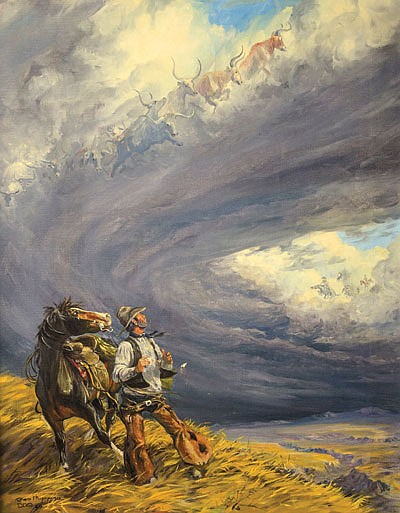
In this episode we take a look at the history of one of the most widely post WWII, "Covered" popular songs in the ASCAP publishing database.
From its humble beginnings as a European folk song to its re-appearance during the American Civil War asa melody for a drinking song, to its eventual use as she basis for a song about a cautionary tale warning a cowboy that if he doesn't change his ways, who will one day join the damned cowboys doomed to try to “catch the Devil”s herd across these endless skies.
Music Videos
While not an official video production from the estate of Marty Robbins, I really do think that this visual interpretation captures some the essence regarding "Riders in the Sky"
From a September 1990 episode of the CBS Television show "Hee Haw". Glen Campbell & Roy Clark play "Ghost Riders in the Sky", with some help from Jeff Dayton. Glen & Roy's version of this song is on the soundtrack album for the 1985 movie "Uphill All the Way", available at finer retailers everywhere!
This is 1961... (Restored footage). Levang was hired as a temporary guitar and banjo player on The Lawrence Welk Show when Buddy Merrill left to serve in the United States Army. Welk was so pleased with his ability that he hired Levang on a permanent basis when Buddy completed his tour of duty in 1961. Levang stayed with the Welk Band until its final show in 1982.
That same year, at the Country Music Association Awards he was nominated for best artist on a specialty instrument, the mandolin.
He was also an accomplished studio musician, playing on several records for artists such as Glen Campbell, Frank Zappa, Bobby Darin, Bobbi Gentry, David Clayton Thomas, Neal Hefti ("Batman Theme"), Elvis Presley, Dean Martin, Neil Diamond and Noel Boggs. Levang died in Canyon Country, California at the age of 83.
The ill fated reboot of the Blues Brothers movie franchise in the late 1990s tried to recapture the romance and legitimacy of the original film by relying on trade and true musical icons such as "Riders in the Sky".
Filmed in Toronto, Ontario Canada, most of which was shot in the Cherry Street area of Toronto in what is now the "Distillery District". The timing was right and so were the surroundings. The area had been a staging ground and ancillary storage and processing to the nearby Docklands south of Lakeshore Drive.
I watched the movie filming evolve on a daily basis during 1996/1997 as I drove Cherry St. Daily on my way to work. Sets going up and then controlled destruction of the concert hall included in this clip.
One of the first appearances of "Riders in the Sky" came during a 1949 episode of the movie by the same name. Singing Cowboy Gene Autry sings the Western Classic song "Ghost Riders in the Sky" from his movie "Riders in the Sky" from Columbia Pictures 1949.
By the mid 1980s, Duane Eddy had entered a new career awakening after his work with the Art of Noise and their reworking of the "Peter Gunn Theme". This time out we catch Duane flying his stylings all over our featured track. This video is from an American TV appearance in 1996.
In the USA, and more specifically, Texas is full of lore, legends, and ghost stories. The tale of the Ghost Riders is by far the saddest, most evil, not to mention, the most famous one in the country. This legend is sadly true, a senseless ghoulish tragedy which took place in Crosby County, Texas. You may know it as Stampede Mesa. The legend inspired the classic song “Ghost Riders in the Sky.”
Playlists
We take a look at those camp kings the Cramps and their early music illustrating their success by playing the original songs by the original artists, the Cramps demos and live bootlegs and then finally contrast those efforts with the final album version.
Then blast head first into the first two albums with Sunglasses After Dark, Mystery Plane, Twist and Shout which ends up released as Drug Train.
Finally, we look at the tracks from Psychedelic Jungle. Jungle Hop, the Crusher, and Rocking Bones.
Geta master class in the Cramps and the cover songs that made them famous.
Listen to the growth and evolution of Cramps classics from their first EP such as Human Fly, The Way I Walk and Domino or the ULTRA RARE Red Headed Woman from the same sessions.
The Cramps "Human Fly" short 16mm film promo by Alex de Laszlo shot in New York City circa, 1978. I dig how instead of the film makers going for the obvious, and attempt to literally illustrate the lyrics, they just chose to use the images with the weird creepy vibe of the song.
If you still remain uncertain as to the the impact the Cramps have had on Rock & Roll, Henry Rollins lays forth a very certain viewpoint for you to at least dig a little further. The greatest thing about Henry is how he still comes across in this monologue as a music fan first despite his years as a successful front man himself.
In Canada, our version of MTV was MuchMusic. Originally, just as MTV did, MuchMusic were all about the music and videos, before alas, becoming a tween/teen lifestyle channel, then finally cancelled by its new owner Bell Media. One thing that MuchMusic did well was to promote music that wasn't necessarily mainstream at the time.
In advance of their concert at the Masonic Temple in Toronto in May of 1990, Lux and Ivy interview with Erica Ehm, who, em . . . seems a little unsure of what to make of the pair. Still an entertaining video package.
As far as concert films go the famed and notorious "Live at Napa State Mental Hospital" is perhaps the most incredible, ballsy and original concert ever recorded. The Cramps performed a free concert given for the patients at the California State Mental Hospital in Napa, CA, on June 13, 1978, a time when Napa was more known for the hospital than for its burgeoning wine industry.
Once upon a time, a hospital castle was Napa Valley’s centerpiece Kirk Kirkpatrick Feb 20, 2018 provides the reader with a fantastic and sympathetic history of the grounds, the castle and programs offered to the less fortunate amongst us. Well worth the read.
The videotape of The Cramps performing the free show for the patients at The Napa Hospital was intended initially as strictly a documentary. How the tape changed hands to become released by Target Video is widely disputed, what's not is the authenticity of the band and more importantly the that of the audio members.
The videotape was recorded on a 1/2" Sony Portapak, B/W camera, and single microphone. This equipment was some of the first of its kind to be made available for public or consumer use. The release version we have was taken from an original VHS tape and then colourized by an avid fan. Don't expect anything more than amateurish camera work, but you should expect to see a band who were not afraid or put off by the audience putting on s show of shows. Hint: while Lux and Ivy are synonymous with the band, watch Bryan Gregory on the left hand side of the stage . . . He's the master distortion and fuzz.
Playlist
The TV Show . . .
The lead character was handsome, dashing, and consistently well-dressed in tailored suits, which never seemed to wrinkle even after the usual scuffles with the bad guys.
Edwards clearly modelled the character of Peter Gunn on Cary Grant, considered one of Hollywood’s most debonair leading men at the time. The actor chosen to play Gunn, Craig Stevens, even bore a close resemblance to Grant.
The series was set in Los Angeles (although the actual city was never mentioned by name in the series) and, more often than not, inside a jazz club called Mother’s.
The storyline essentially centred around Gunn solving his client’s problems (for which he charged $1000 a case), which always involved having to deal with an assortment of hitmen, hoodlums and assorted “hip” characters found on the jazz scene.
To get a feel for the show that inspired the music, here is Episode 1, Season 2 of the Peter Gunn television series.
During the 1980s the Peter Gunn show was revived for television in 1989. A long-gestating ABC 90-minute pilot, Peter Gunn aired in April 1989 with Peter Strauss in the lead role that was written, produced, and directed by Blake Edwards, but the network failed to order a series despite strong ratings and reviews. Take a look at the promo spot for the TV series, pay attention the very 1980s aesthetic.
The Art Of Noise
Although I've loved this song and video by the Art of Noise, it took about 30 years for me to recognize Rik Mayall as the star of this video. Rik and his friends such as great British comedians Adrian Edmondson, Jennifer Saunders, Dawn French, Alexei Sayle, Peter Richardson and Nigel Planer were seen on television screens in Britain and enjoyed immense success.
A rare appearance of both Duane Eddy and the Art of noise from their 1986 appearance on the British TV show "the Tube". BTW, Duane Eddy is still alive and kicking at age 82.
Blues Brothers
Originally performed for the seminal Blues Brothers movie, we catch the original members of the Blues Brothers band in a 1992 concert.
The Cramps
No collection of Peter Gunn videos would be complete without an entry featuring the Cramps lead guitarist Poison Ivy. She was the foremost female guitarist of the 1980s that left any mark on the alternative music world.
Cherry Wainer
Perhaps my all-time favourite version of the Peter Gunn theme is by the husband and wife duo of Cherry Wainer with Don Storer. This clip is from a German TV show during the mid 1960s. Cherry is so fun to watch. Clearly she loved to be on camera and to perform!
ELP (Emerson,Lake and Palmer)
While not taken from the 1977 Montreal concert where their live album was recorded, you still get a sense of their appreciation for the Classic Peter Gunn Theme. Emerson, Lake and Palmer opened their shows with the Peter Gunn theme as means of cheesing up the audience for what was to come during the rest of the concert.
Altec Lansing "Voice of the Theatre" Speakers
The speakers used to create the fabulous echo and reverse on the original Peter Gunn recordings were the classic -industry standard - Altec Lansing A-700 and A5 VOTT (Voice of the Theatre) Speakers. Read on for a look into the company, their speakers and the importance and impact they had on the music and film industries.
Altec Lansing, Inc. is a U.S. audio electronics company founded in 1927. Their primary products are loudspeakers and associated audio electronics for professional, home, automotive and multimedia applications.
Engineers at Western Electric, who later formed Altec Services Company, developed the technology for motion picture sound that was introduced in 1927, with the release of The Jazz Singer. Originally, Altec Services Company serviced the theatre sound systems the company founders had helped develop. In 1941 the Altec Services Company purchased the nearly bankrupt Lansing Manufacturing Company and melded the two names, forming the Altec Lansing Corporation, and with the manufacturing capabilities of the former Lansing Manufacturing Company, they quickly expanded into manufacturing horn loudspeakers.
For a really good look at the design and impact of the Voice of the Theatre Speaker History check out this link. Although the article can get a little technical, the author does a good job of presenting the reasons why the technology became a standard in the audio world.
The "Peter Gunn" Guitar
The Bob Bain story is an extremely long and varied one, detailed in this great article over at "Vintage Guitar" magazine. The Bob Bain Story.
Take the time to glance at the custom The Peter Gunn Guitar over at the Fender guitars page to see a photo of the original and some technical info about the limited edition reproduction guitar.
Playlists
 Perhaps the most telling statistic I’ve come across about disco and more specifically about the Montreal disco scene was that the police reported in 1970 that 80% of Montreal’s missing young people could be found in discothèques.
Perhaps the most telling statistic I’ve come across about disco and more specifically about the Montreal disco scene was that the police reported in 1970 that 80% of Montreal’s missing young people could be found in discothèques.
During the 70s, for some people, disco was all empty glitz and glamour, smoke and mirrored balls and the pinnacle of 70s exhibitionism. Montreal exemplified those qualities during a time when the the city’s greatness was dissolving after reaching its high watermark during Expo 67. Moreover, disco’s origins were far grittier than the slick veneer of the well know Studio 54. Before your mom was doing the YMCA at weddings, disco was the beating heart of the Montreal underground. It was the music of liberation, inclusiveness and empowerment with a four-on-the-floor bassline as its rallying cry.
Expo 67
In1967 the world came to Montreal for Canada's Worlds Fair. Read about the event and its impact on the city of Montreal and the explosion of cultural awareness that helped usher in the disco era.
Disco TV Shows
Check out this clip of CFCF Montreal's CTV network show "Feel Like Dancin'"from 1977! They were actually pretty cutting edge . . . In this episode they introduce Grave Jones.
Disco Life
If you really want to get a look at the extravagance of the Disco era take a look at these pictures That Show Just How Crazy 1970s Disco Really Was.
Spotify Playlist
Apple Music Playlist
In this episode we examine all 17 samples from the Beastie Boys "Hey Ladies" and get a feel for where the samples lived prior to being used by the Beastie Boys. While most cuts are readily available digitally, several took some deep diving at the used record stores in my area in order to get copies that could be digitized for the show.
If you’re like me, you expected the Beastie Boys second album, 1989’s Paul’s Boutique, to be filled with the same misogynistic lyrics and odes to frat boy parties as their freshman output Licensed to Ill. Surprisingly, their departure from Def Jam records and Rick Rubin’ s production influence, may just have been their saving grace.
While Rubin’s influence extends to nearly every aspect of Licensed to Ill, it was still the perfect musical foil for the Bestie Boys. Problems arose however, when critics started referring to the band in the same context as the 1960’s TV show band the Monkeys. Could they really play any instruments? Were they just a culmination of studio production talent? Moreover, many a critic likened their cultural appropriation and plundering of black music to that of the Blues Brothers and the money train which followed them through the 1980s.
The video for "Hey Ladies" also deserves a viewing as it is quite humorous in its own right.
Samples
- "Come Let Me Love You (Instrumental)" by Jeanette "Lady" Day
- "Machine Gun" by Commodores
- "Magilla Gorilla" by Hoyt Curtin
- "Holy Ghost" by Bar-Kays
- "Ain't It Funky Now" and "Funky President (People It's Bad)" by James Brown
- "Hey DJ" by World's Famous Supreme Team
- "The Ballroom Blitz" by Sweet
- "Shake Your Pants" by Cameo
- "Jungle Boogie" by Kool & the Gang
- "So Ruff, So Tuff" by Roger
- "Party Time" by Kurtis Blow
- "Pumpin' It Up (Special Club Mix)" by P-Funk All Stars
- "Jazzy Sensation" by Afrika Bambaataa and The Jazzy 5
- "High Power Rap" by Crash Crew
- "Change the Beat (Female Version)" by Beside
- "Hush" by Deep Purple
References
The lyrics for "Hey Ladies" are rife with timeless references to pop culture. However, for those not old enough to remember or quite frankly you may have forgotten here is a list.
- Saduhara Oh - great Japanese baseball player
- "Take my advice at any price a gorilla like..." - from Magilla Gorilla theme song (actual lyrics "a gorilla like Magilla is mighty nice")
- Tom Thumb
- Tom Foolery - acting in a foolish manner
- Chuck Woolery - host of TV’s Love Connection
- Welcome Back Kotter
- James at 15 - Lance Kerwin TV show from late 70s
- Chachi in Charge - a reference to Scott Baio’s character in Happy Days, and his show "Charles in Charge"
- "Tune In, Turn On" - (Drop Out) - popular phrase in 60’s by Dr. Timothy Leary
- "Vincent Van Gogh - Famous painter, who mailed his severed ear to his girlfriend to show how much he loved her
- Tom Cushman is a nationally syndicated sportswriter
Listen to our Playlist
In this episode of the Buster Mungus Diaries I take a look at 4 of my favourite live recordings of all-time.
The albums are fabulous in their own right, but they do provide a glimpse at musicians/bands when the material is paired with great engineering and a fantastic performance. Consider the variety and range of performances by the likes of, Jerry Lee Lewis, The MC5, Deep Purple and the Allman brothers Band.
I grew up during the decade of the live album. As an Artist you were nobody until you had a live album in late 1960s into the late 1970s. It announced your triumphs over the previous album releases and marked your maturity as an artist, usually with a multi gate fold, poster sometimes included, double LP.
Jerry Lee Lewis
Jerry Lee Lewis (born September 29, 1935) is an American rock and roll and country music singer and pianist. An early pioneer of rock and roll music, Lewis was inducted into the Rock and Roll Hall of Fame in 1986 and his pioneering contribution to the genre has been recognized by the Rockabilly Hall of Fame. In 2004, Rolling Stone Magazine ranked him number 24 on their list of the 100 Greatest Artists of All Time.
The MC5
MC5 was an American rock band from Lincoln Park, Michigan, formed in 1964. The original band line-up consisted of vocalist Rob Tyner, guitarists Wayne Kramer and Fred "Sonic" Smith, bassist Michael Davis, and drummer Dennis Thompson. MC5 was listed by VH1 as one of the most important American hard rock groups of their era. Their three albums are regarded by many as classics, and their song "Kick Out the Jams" is widely covered.
Someone in the studio (with the initials W.K.) got tired of watching "KOTJ" being taught incorrectly on YouTube. So, on a challenge, that same complainer taught our "resident youth" William Olivas to play it correctly. If William can do it, anyone can. And now you can, too. Finally! Now, once more, with feeling...
Deep Purple
While Deep Purple have been copied and imitated by many artists and bands throughout the years, none have captured the essence and feel of the Mark II lineup.
| Mark IIa (July 1969 – June 1973) |
|
|---|
This lineup is considered the "Gold Standard" among longtime fans of the band. The Mark II produced two of the 1970s greatest albums, "Machine Head" and our pick, "Made in Japan"
The Allman Brothers Band
While some of the greatest live performances during a bands history are never recorded on audio tape of film, sometimes we get lucky and find the next best the next best thing. Most of the early film of the band live is either from super 8 film of just plain horrible quality due to low light levels, there are a few worth watching. In this clip 1971, Duane and Dicky illustrate their guitar prowess without walking over each other. Moreover Dickey hasn't yet entered his "I'll play as loudly as I want to" phase so there is some noted restraint while playing in the shadow of the great Duane Allman.
In this episode we take a look at the history of one of the most recognized and widely covered surf songs -- Misirlou.
Dick Dale
Taken from the film "A Swingin Affair" released in 1963. The band also performs another tune in the film but its not as good.
Spliced together from clips taken from the movie "Pulp Fiction" this version is sonically the same, simply using the originally recorded studio track and setting it to the film clips.
We trace the song from its origin as a middle eastern folk song in the 1920's through to its re-invention as a modern day surf classic from Dick Dale, to its impact on cinema goers as the theme song for Quentin Tarantino's 1994 film Pulp Fiction.
Learn to Play Misirlou
In this short clip you'll learn the basics of how to play the classic on the electric guitar.
In this Misirlou guitar lesson, I will show you to play this Dick Dale classic note-for-note.
We will be using standard tuning. The most obvious technique used by Dick Dale throughout "Misirlou" is the rapid fire tremolo picking. In order to accomplish this and also make the guitar tone brighter, he chose to pick very close to the bridge.
Picking very close to the bridge makes the string feel tighter, which in turn can make it a bit easier to rapidly pick the string.
You will need a lot of endurance to make it through the entire song. The most important thing to remember is to try and keep your right hand wrist and forearm as relaxed as possible. That is very difficult to do because the picking is almost non-stop. "Misirlou" is a great exercise in staying relaxed during fast picking passages.
There is also a short chord section where the guitar takes a rhythm guitar approach underneath a trumpet solo. I will show you the chords used during this section of the song and it gives a chance for you to relax your picking hand a bit.
So I hope you enjoy learning this surf rock guitar workout!
Carl...

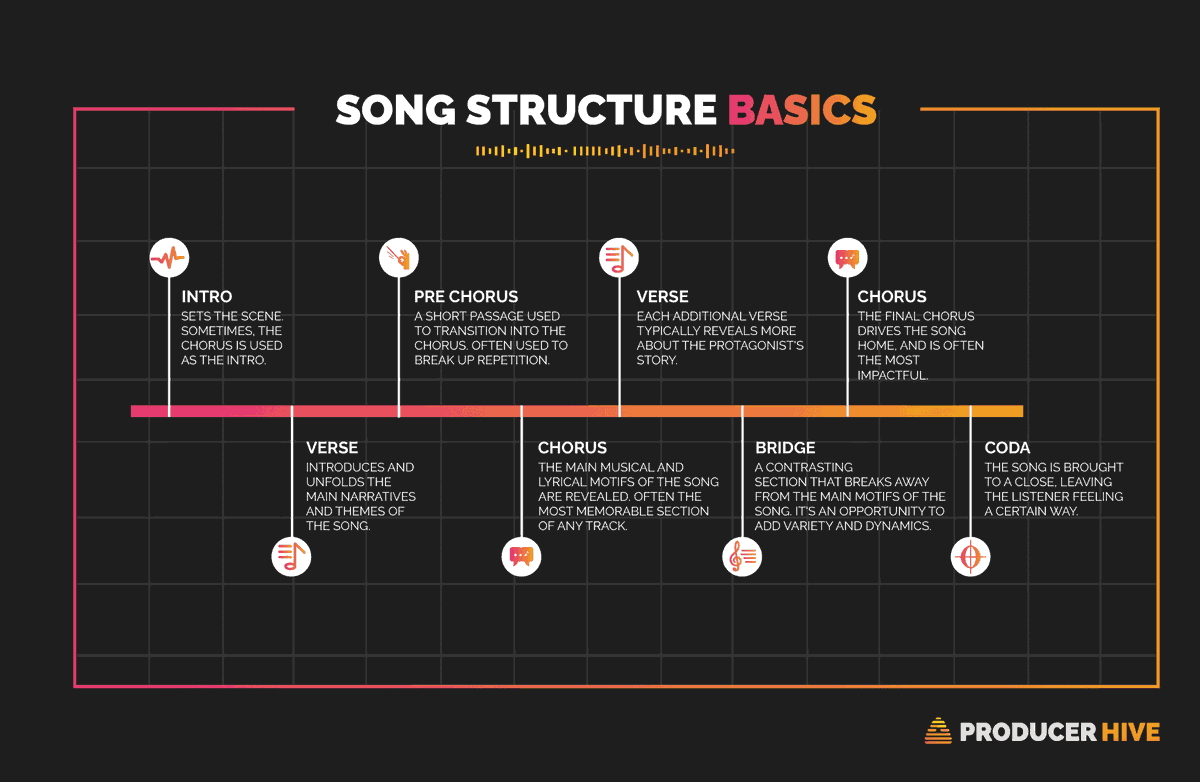
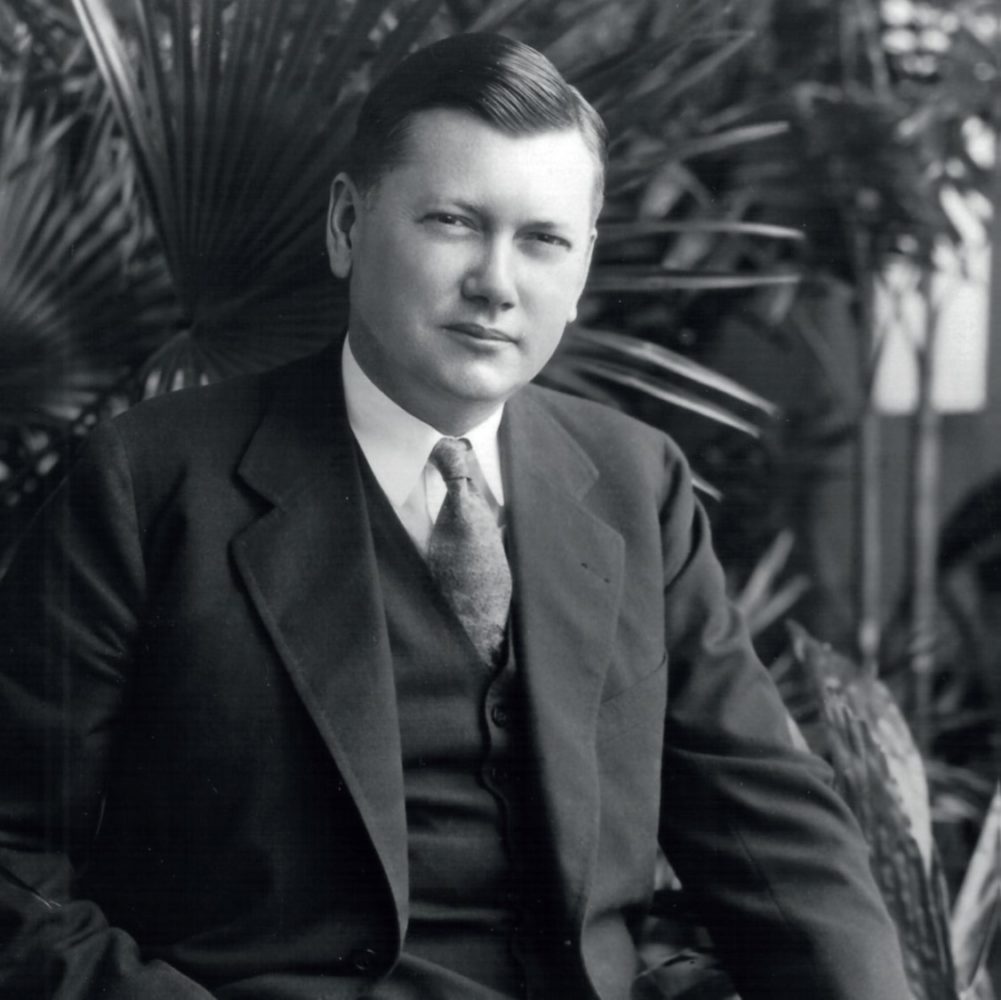

:format(jpeg):mode_rgb():quality(40)/discogs-images/A-313017-1522412209-5676.jpeg.jpg)


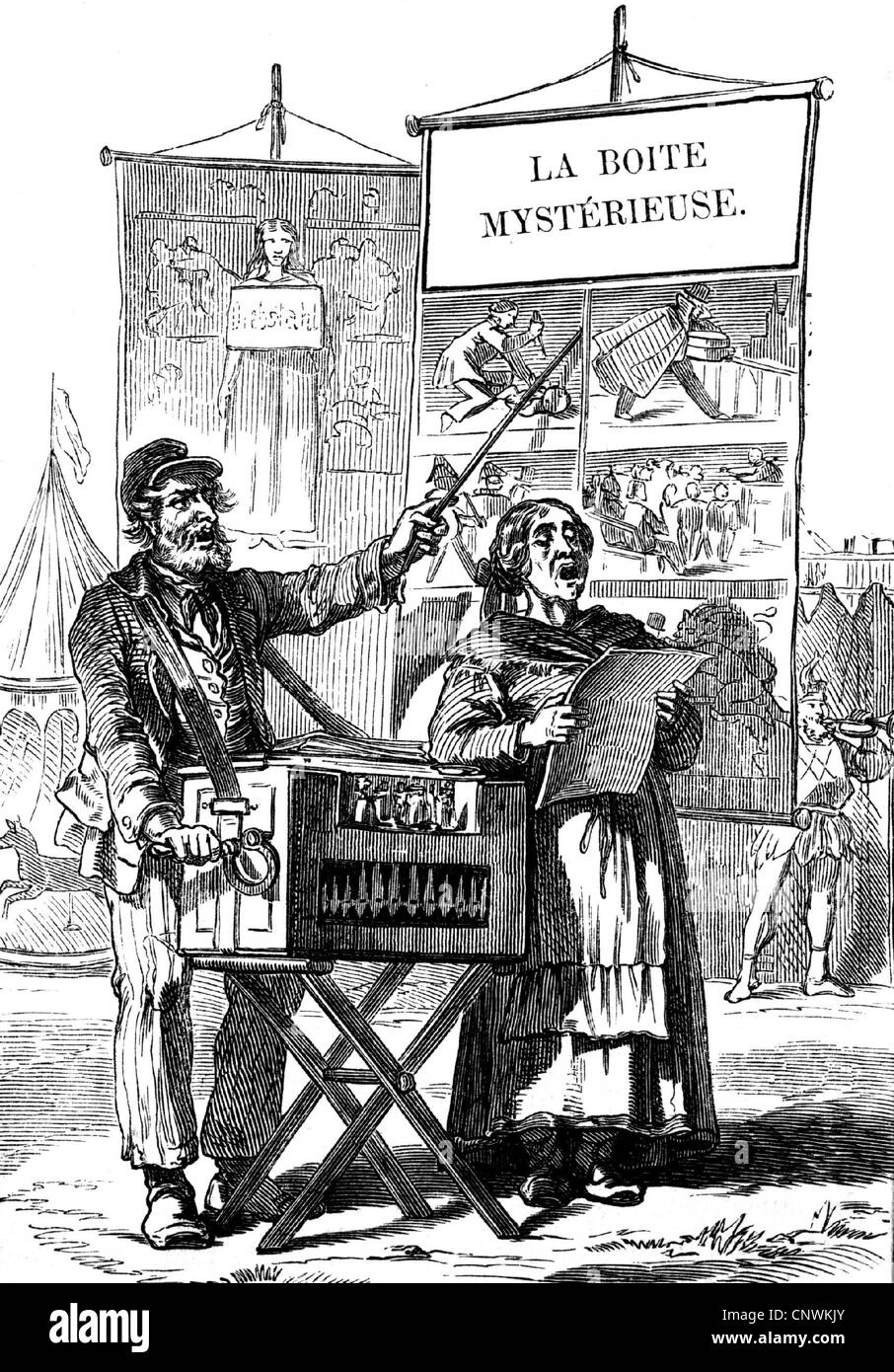
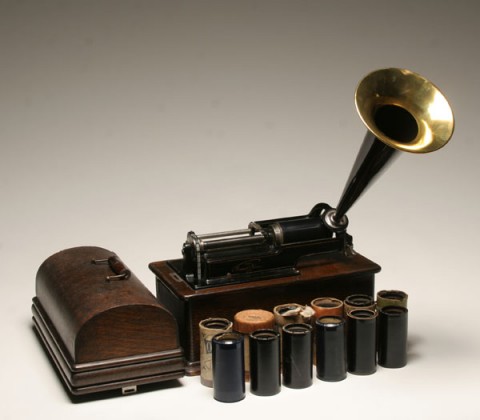

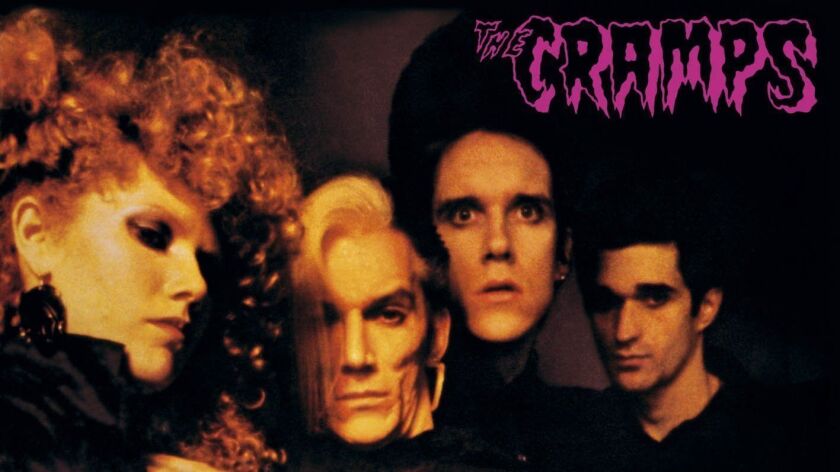
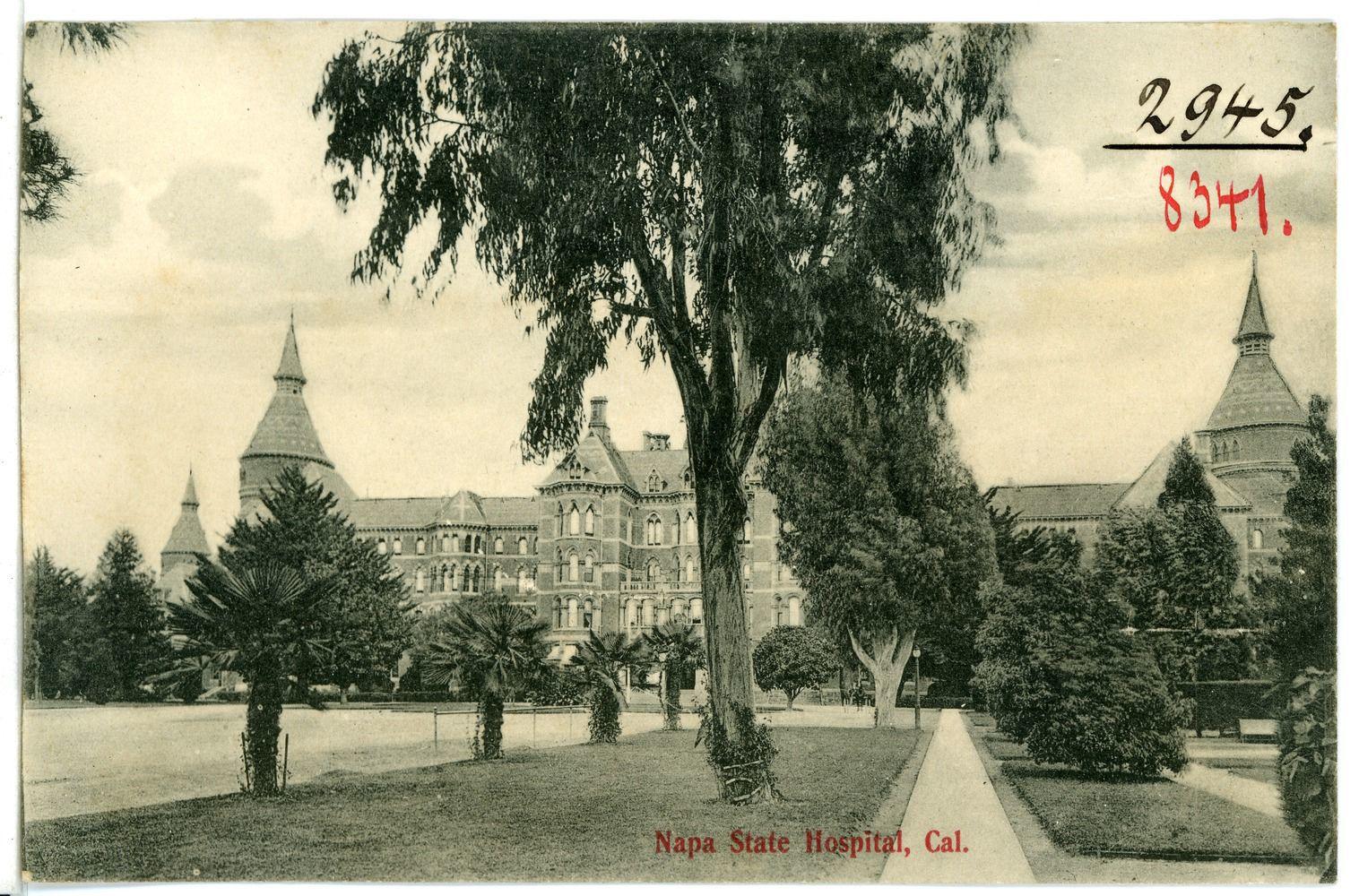



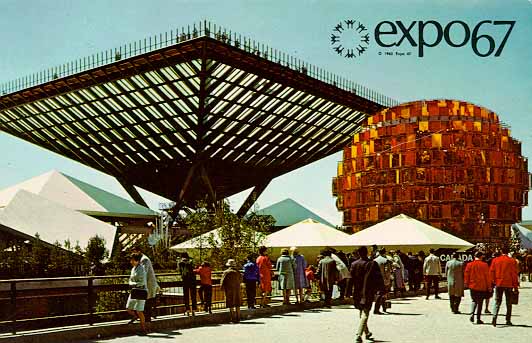
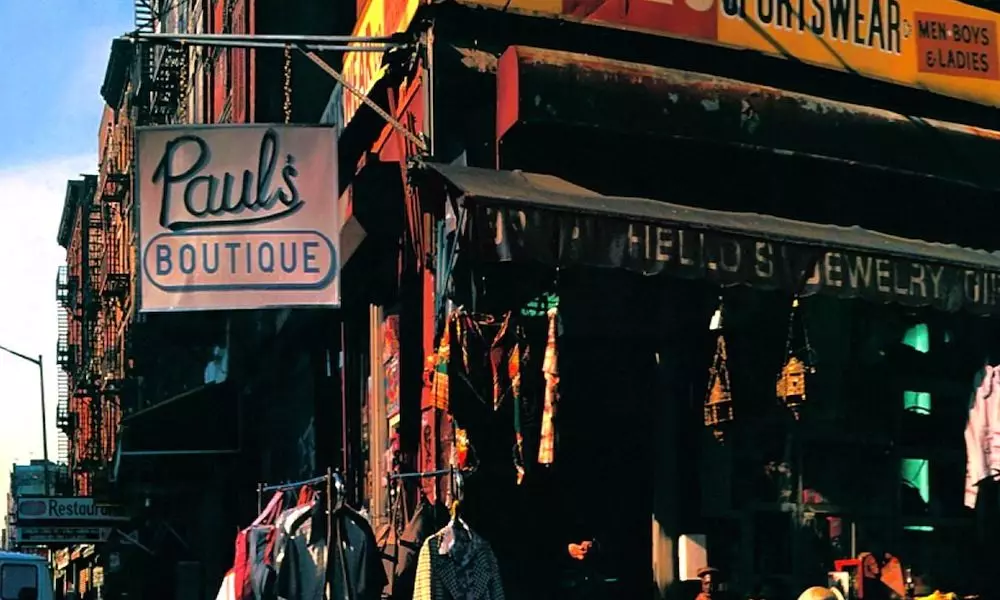




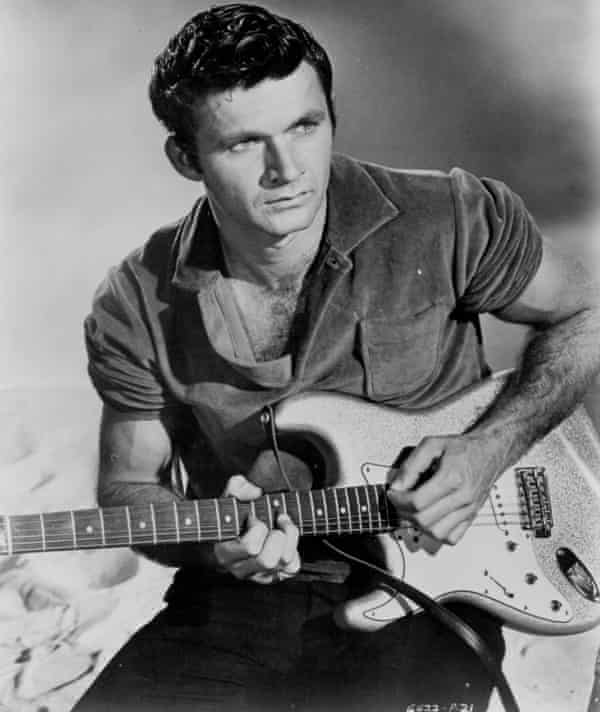





Social Media
Search Here